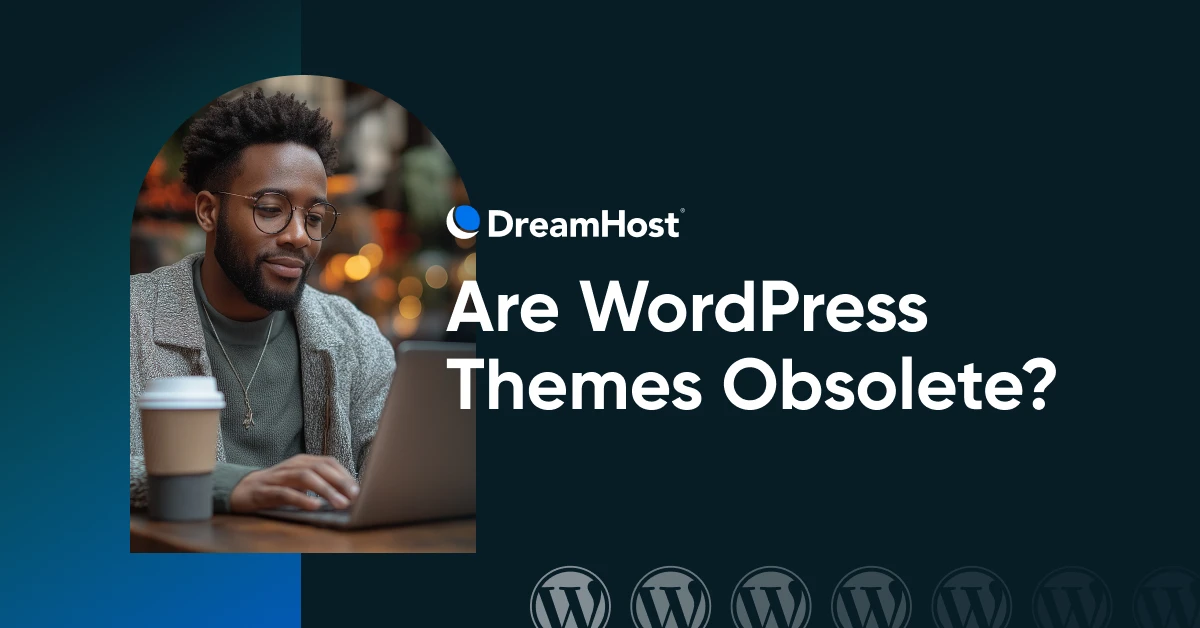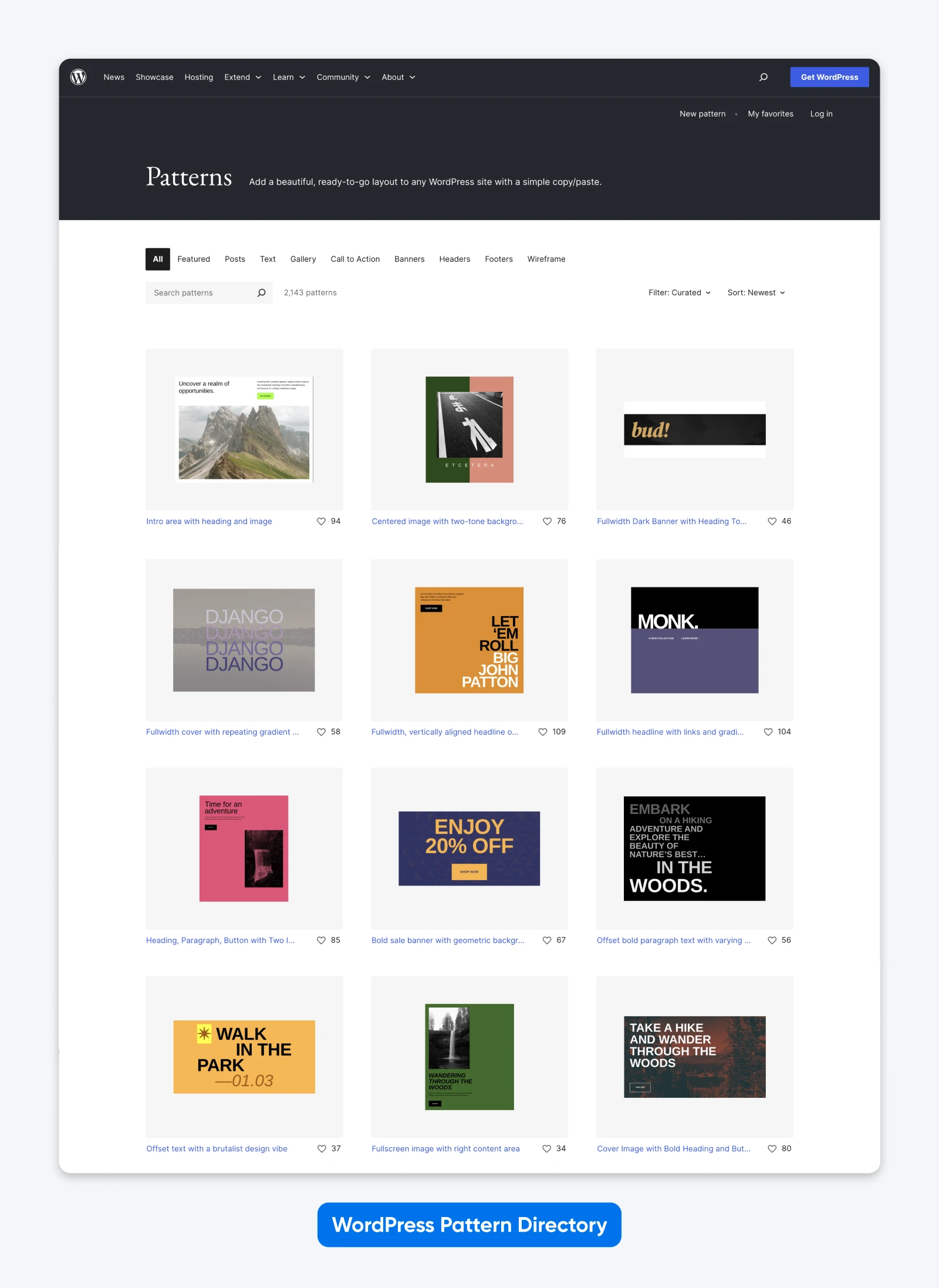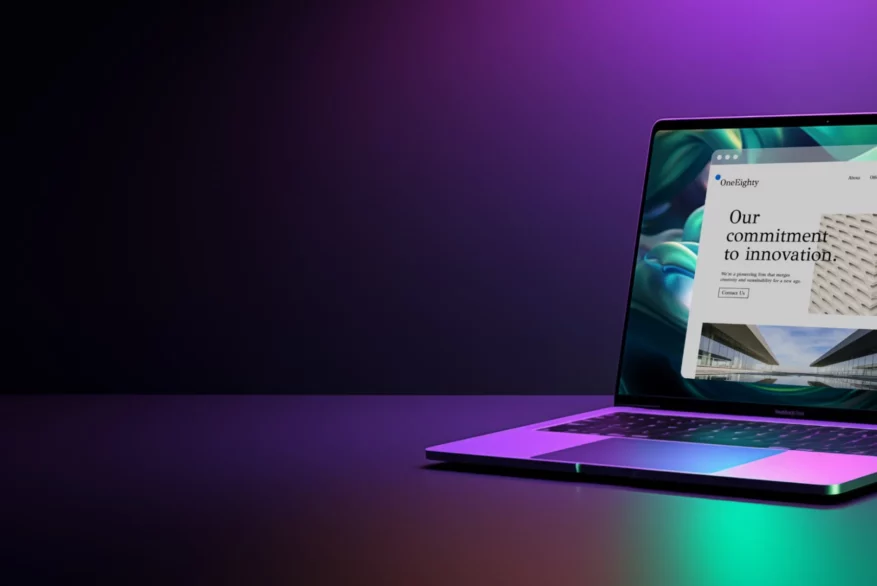Are WordPress Themes Obsolete? – DreamHost

[tldr]
You would set up your site in seconds, grab a theme, and begin posting. No messing around with blocks. Just pure publishing, baby.
But things have changed. WordPress has evolved into a full site builder. Most of us now want an active hand in designing our websites.
So…are themes dead? Why do you need a template if you’re just going to design the whole thing yourself?
We know nuance isn’t really allowed on the Internet, but let’s give it a go:
Themes aren’t obsolete — they’re just evolving from rigid templates into flexible foundations.
There, we said it. And if you can spare five minutes, we’ll explain:
- What changed and why it matters to you
- How to navigate the new world of themes
- How to blend blocks, builders, patterns, and themes in a perfect cocktail
Deal? Let’s get started.
How WordPress Themes Have Changed
To understand the current state of play, it’s worth taking a quick look in the rear-view mirror.
Back in the day, your theme was the backbone of your site. A complete design blueprint in one static template. It was quick and convenient, but limiting.
Then, in 2018, WordPress introduced the Gutenberg block editor. During this transition phase, your theme still largely dictated the design of your site, but you had some room for creativity on individual pages.
Around the same time, page builders like Elementor and Divi came to the fore. They introduced full drag-and-drop design to WordPress, albeit through third-party plugins.
In WordPress 5.5, the block patterns feature emerged, allowing site owners to create preset layouts of blocks and drop them anywhere. This made it much faster to build complex pages and posts.
And since WordPress 5.9, we’ve had the Full Site Editor. This feature changed the game. Instead of simply tweaking your chosen theme, you can now completely reshape it — without the need for special plugins or theme options.
Notice the trend?
WordPress design has gradually moved away from fixed templates in favor of total flexibility.

Why People Say That Themes Are Dying
With all the new design tools in WordPress today, themes are clearly less important than they used to be.
It’s also fair to say that some themes are losing their luster.
“I wouldn’t say themes are obsolete. But I’d say there are lots of themes out there that are.” — Alex Granata, WordPress Tech Support Specialist at DreamHost.
We’re mainly looking at older, template-based themes here. They are falling by the wayside for several reasons.
- The lock-in problem: Many of these themes rely on shortcodes and customizers that only work with that specific theme. If you ever want to switch, you’ll have to start from scratch.
- Limited customization: Some older, template-based themes offer few options for changing the appearance of your site.
- Poor compatibility: Themes that were built before the introduction of blocks and patterns don’t support these features. That’s a bummer if you ever want to rearrange your site.
But don’t get it twisted. These issues don’t apply to all themes. In fact, a modern WordPress theme can be a real asset.
Why Themes Still Matter
Many of us think of themes as design templates.
In reality, though, a theme is more like a starter kit. It defines the core layout and frontend functionality of your website.
Sure, you could code these essential features by hand. But unless you’re building a custom site for a Fortune 500 company, you probably shouldn’t waste your time.
A good theme is the technical foundation for your design ambitions.
If you ask me, themes are here to stay. They don’t just launch a site; they shape what’s possible in WordPress and fill gaps that Core (WordPress itself) doesn’t cover yet.
But what about all those design trends everyone keeps talking about? Blocks, page builders, patterns…
These tools can all contribute to the design process, but none of them actually replaces the need for a theme. They build on the underlying foundation.

In other words, you should still be looking for a theme, even if you’re building a brand-new site today.
Which WordPress Themes Are Worth Your Time?
Given what we know about older themes, it makes sense to pick something “modern” — a theme that supports all the great features WordPress has to offer.
These come in three major categories:
Modern “Hybrid” Themes
Hybrid themes blend the old with the new, offering pre-built designs while embracing WordPress’s block editor.
This halfway point is great if you want some control over how your site looks, but you don’t want to build something from the ground up.
Themes like Kadence, GeneratePress, and Blocksy fall into this camp. They play nicely with the Site Editor and supply a few of their own customization options.
Who they’re for: Site owners who want flexibility without starting from scratch. Perfect if you want some control over design, but you’d rather not dedicate the next year to choosing fonts.
Specialized “Builder” Themes
Builder themes, like Divi, Avada, and BeTheme, come packed with their own visual tools and massive libraries of ready-made layouts. They allow you to create a completely custom site without needing to mess around with code.
When you choose a builder theme, you’re really buying into an entire design ecosystem. That’s great if you’re planning to stick with your theme forever, but switching later can be a problem.
Who they’re for: Agencies, freelancers, and design enthusiasts who want maximum control without touching code. If you’re building multiple sites or love having 500+ demo layouts at your fingertips, these themes could be perfect.
Simple “Core” Themes
At the opposite end of the spectrum, we have core themes.
These minimalist masterpieces provide just enough structure to build upon with blocks, patterns, and page builders.
Twenty Twenty-Five (WordPress’s latest default theme) is a prime example. Popular third-party examples include Frost and Ollie. They’re intentionally sparse. Designed to showcase the Site Editor’s capabilities rather than impose their own design opinions.
More extreme examples, like Sage, provide only the bare necessities. These are designed for skilled developers who are comfortable building designs in code.
Who they’re for: Designers and developers who want complete creative freedom. Also great for learning how modern WordPress really works under the hood.
🧱 WordPress Theme Types at a Glance
How Should You Build Your WordPress Site?
Choosing a theme is only the starting point, of course. You can then use blocks, patterns, and page builders to adjust your site as much (or as little) as you want.
Not sure where to start? Here’s a simple decision framework:
For Simple, Speedy Setup, Use a Modern “Hybrid” Theme
If you need a site up and running yesterday (and let’s be honest, who doesn’t?), a hybrid theme is your express ticket.
Install something like Kadence or GeneratePress, import a starter template that’s 80% there, and tweak the remaining 20% to match your vision. You’ll have a professional-looking site before your coffee gets cold.
The beauty of hybrid themes is that they don’t force you into a corner. Start simple today, go wild with customization tomorrow. They’re patient like that.

For More Customization, Add Blocks and Patterns
Got a hybrid or core theme installed? Sweet. Now let’s make it yours.
The WordPress Pattern Directory is like a design buffet — grab what looks good, skip what doesn’t. Need a pricing table? There are dozens to choose from. Want a fancy testimonial carousel? Coming right up.

Some third-party themes, like Astra and Bricks, come with their own blocks and patterns, giving you even more creative freedom.
The trick is knowing when to stop. It’s tempting to go pattern-crazy and end up with a Frankenstein’s monster of a website. Remember: patterns are ingredients, not the whole meal.
Pro move: Create your own patterns from blocks you’ve customized. Build once, reuse everywhere. Future You will thank Present You.
For Total Creative Control Without Code, Consider a Page Builder
Say you’re building a complex sales funnel, or your client has a vision that would make Picasso jealous. That’s page builder territory.
Fair warning: with great power comes great responsibility. Page builders hand you the keys to the design kingdom, but they also make it easy to overcomplicate things.
That parallax animation looks cool, but does it actually help your visitors? Those 47 different fonts seemed like a good idea at 2 A.M., but…
The smart approach? Start with a builder-friendly theme (or even a builder theme), use the pre-built templates as training wheels, and then gradually customize as you learn the ropes.

Happy To Code? Try Building on a Bare Bones Core Theme
If you’re comfortable with HTML, CSS, and a bit of PHP, core themes offer the perfect middle ground between starting from scratch and being boxed in by someone else’s design decisions.
Core themes (also called starter themes, foundation themes, or frameworks) provide the skeleton for your site. They handle the technical aspects, such as responsive grids, accessibility standards, and WordPress best practices, while leaving the creative decisions entirely up to you.
No pre-built styles to override, no bloat to strip out, just clean, semantic code ready for your customization. Just be aware that creating a full site could take 40 hours or more!
Remember, You Can Mix and Match
Here’s the secret nobody tells you: these aren’t mutually exclusive choices.
You can run a hybrid theme with the Site Editor for your main pages, then use a page builder plugin for that one landing page that needs extra pizzazz.
You can start with patterns, customize them with blocks, and still keep your theme’s design framework intact.
WordPress is flexible like that. The “right” approach is the one that gets you to your goal without driving you insane.
The Future of WordPress Themes
WordPress is a platform that never stands still for long. While themes are still relevant now, could that change in the future?
“In my own opinion, themes will still be used — even if you work on one of the default themes and build block templates for it,” says Granata.
Themes continue to push boundaries and will continue to influence the future of site building.
In fact, they’re shaping the WordPress world right now.
Many themes drive innovation by sharing new features through plugins, like the Ollie Menu Designer mega menu, which was recently released for free by a theme developer.
In other words, themes aren’t relics of the past — they’re engines of progress. As WordPress evolves, so do the themes that help define what’s possible next.

WordPress Hosting
Unbeatable WordPress Hosting
Reliable, lightning-fast hosting solutions specifically optimized for WordPress.
See More



